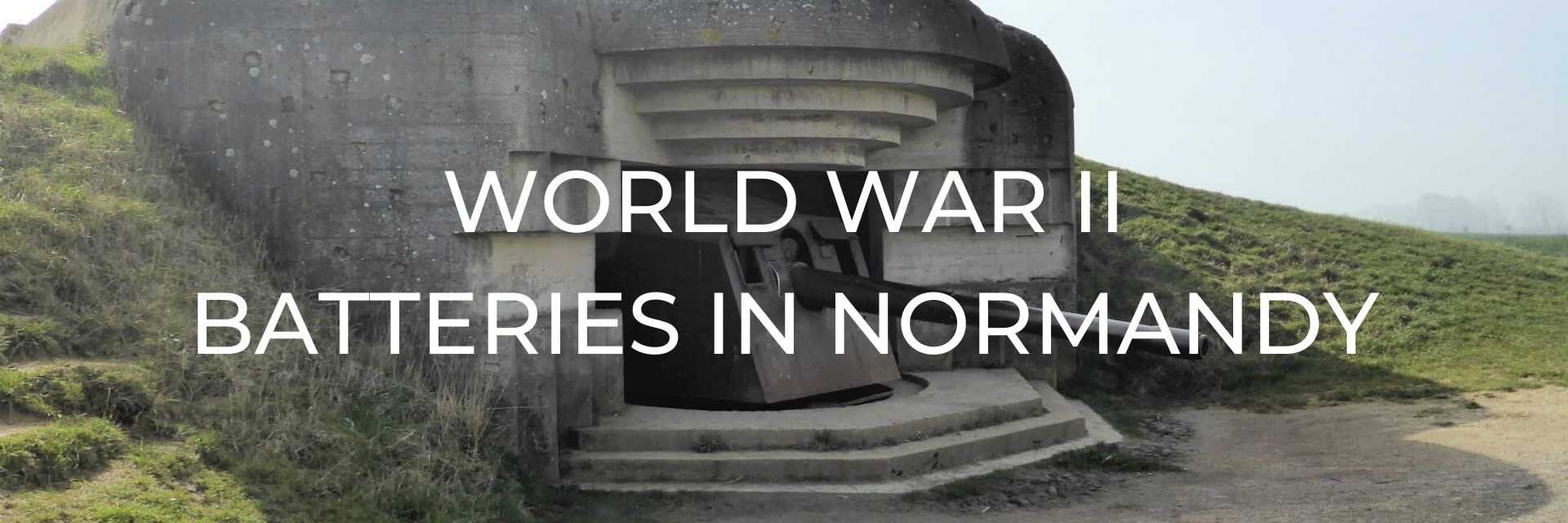
In June 1944 the Normandy coast of France was the location for the largest seaborne invasion in history. The Allies attacked across five zones in an attempt to breach the Atlantic Wall and establish a bridgehead on mainland Europe. Many of the impressive gun emplacements that formed the Atlantic Wall along this part of occupied Europe are still in existence and help to provide visitors with a glimpse into the task the Allies faced on D-Day.
A map showing the location of the batteries can be found at the end of the post.
Want to save this for later? Click the Pinterest button on the left for a pinnable image!
This post may contain affiliate links. Please read our full disclosure policy here.
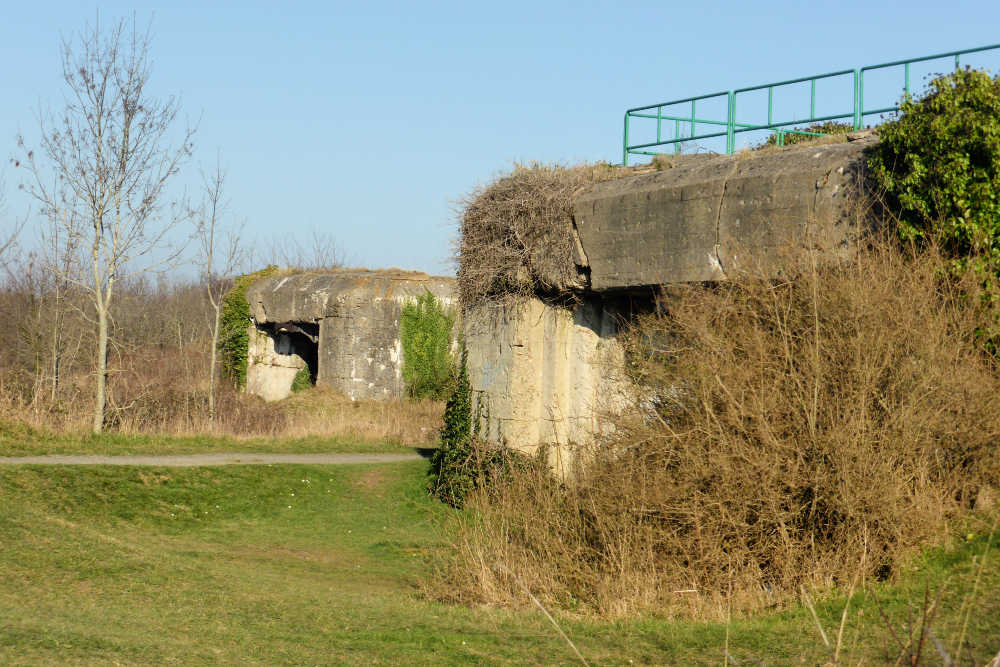
Mont Canisy sits atop a hill overlooking the Seine and the harbour of Le Havre. It was an important part of the Atlantic Wall but was barely used in the battle in Normandy so it is still very well preserved.
Because of its elevation, it has been used as a defensive site since the Middle Ages and then in 1935-1940 the French army built a battery to protect Le Havre, however, the Germans overtook it and realized the importance of its location to build their own coastal defence here. They placed four 155mm guns here, initially open with a 360° traverse, but then, like other sites, they built casements to protect those guns, leaving them open to fire towards the coast only.
The Allies knew about this battery, calling it the Batterie de Bénerville, but despite their repeated bombings the guns were not damaged. After D-Day, the guns became a meaningless target for the Allies because they could no longer fire inland (due to the earlier built casements) so they just bypassed this battery from that point.
Today this site is open to the public and you can wander the above-ground emplacements as you wish. Over the years the trees have grown up and the site is quite heavily wooded but there are still a few places that offer some beautiful views out across Normandy. There are also hundreds of metres of tunnels connecting the casements but even if you don’t go down inside them Mont Canisy is still very worthy of a visit and the climb up the hill.
Reviews of Mont Canisy | 8 Rue du Canisy, 14910 Benerville-sur-Mer
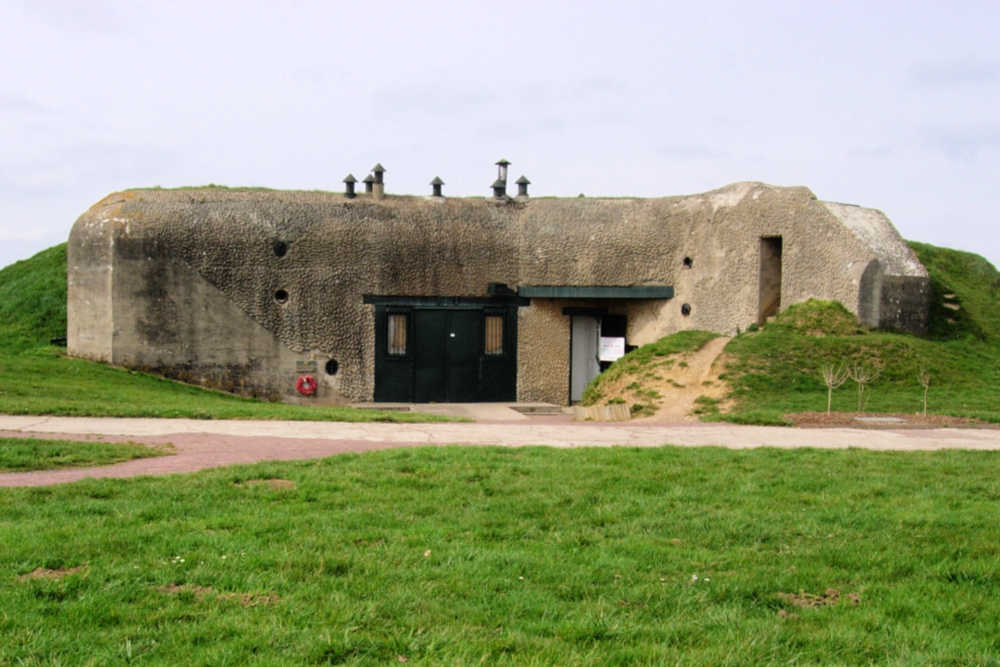
Merville Gun Battery was one of the first places to be attacked by the Allies on D-Day. Its location overlooking Sword Beach created a threat to the landing forces and so the 9th Parachute Battalion was given the task of attacking the battery. Despite being heavily depleted due to forces not landing where intended, equipment failure and the bombing run attacking the battery missing and causing no damage, the attackers successfully captured the four guns. The battery was found to contain WWI vintage 100mm guns instead of the 150mm guns expected, however, they would have still reached Sword Beach and the landing forces there.
The British used what explosives they had to hand to attempt to permanently destroy the guns before leaving the position to attack their next objective. The Nazi’s seized the opportunity to retake the battery and were able to restore two of guns to active service. Luckily the control position at Merville did not have sight of Sword Beach, leaving the guns to fire mostly blind, though initially fire was directed from a regiment in La Breche until they were overrun. The battery was never completely disabled and remained in Nazi hands until 17th August.
Reviews of Merville Gun Battery | Place du 9ème Bataillon, 14810 Merville-Franceville-Plage
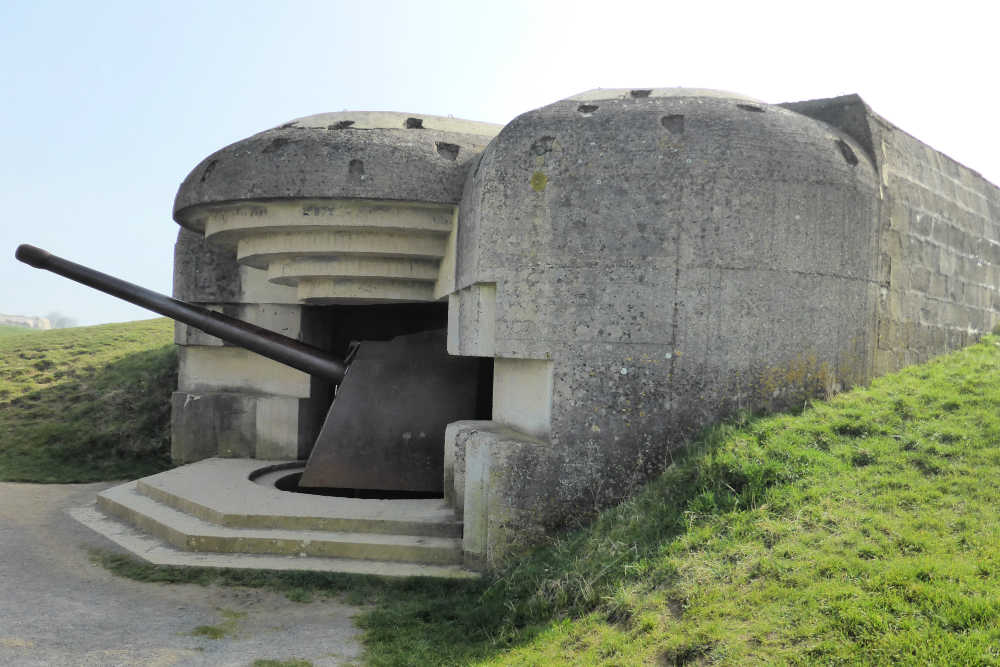
Built in 1944 by the Kriegsmarine, the battery was later transferred over to the German army. It consisted of four 152-mm navy guns that had a range of over 12 miles, able to fire upon the Omaha and Gold beaches and the landing fleet coming ashore there. The concrete casemates protecting the guns were themselves protected by piles of earth built up along their sides. This helped to cushion impacts, preventing them from tipping over if bombs fell nearby, and also helped conceal them.
Three hundred yards ahead, on the edge of the cliff, was the range-finding post. It was fitted with a telemetric aiming device and defended by machine-gun nests, barbed wire, and mines. It was so foggy over the water the day we were there that even though we could look down the cliff’s edge and very clearly hear the water beating against the rocks below we couldn’t really see anything. It makes you wonder how scary it would have been to be a soldier in that post not knowing what could be so close, hiding in all that fog, and getting ready to fire upon them.
During the night of June 5th to 6th, the Allies dropped over a thousand pounds of bombs onto the battery but it didn’t have a great effect. At dawn on the 6th, the battery engaged in an artillery battle with several ships and by evening three of the four guns had been disabled by British cruisers. The crew of the battery (184 men) surrendered to British soldiers the following day.
The unique thing about this battery today is that the guns are still in place, whereas most batteries are just the casemates.
Reviews of Longues sur Mer | 39 Rue de la Mer, 14400 Longues-sur-Mer
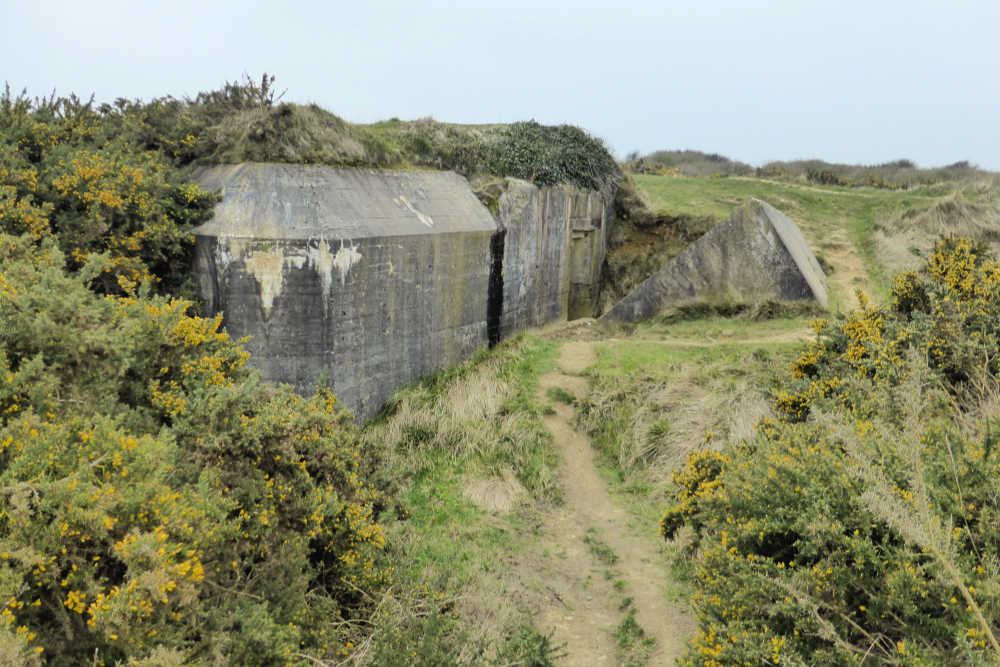
Pointe du Hoc is a 30 m (100 ft) cliff on a small rocky beach that offered no protection to the soldiers tasked with scaling it on their rope ladders. It is between Utah Beach and Omaha Beach and was a well-fortified part of the Atlantic Wall that the Germans had created.
On D-Day, the US Army Rangers Assault Group were assigned to land there, scale the cliffs, and overtake the German defences. While they were shelled upon by the nearby Maisy Battery and German soldiers firing at them from the cliff’s edge with machine guns and grenades, they reached the top and soon discovered that the guns in the emplacements had been replaced with telephone poles. The German troops had moved the guns inland to an apple orchard to save them from bombing and then left them unguarded. Once found by the Rangers they were quickly destroyed.
Although the Rangers mission on D-Day was considered a success as they seized this land from the German soldiers the casualties were many. Two hundred and twenty-five men landed on the beaches but at the end of the two days of fighting, only ninety remained.
Reviews of Pointe du Hoc | 14450 Cricqueville-en-Bessin
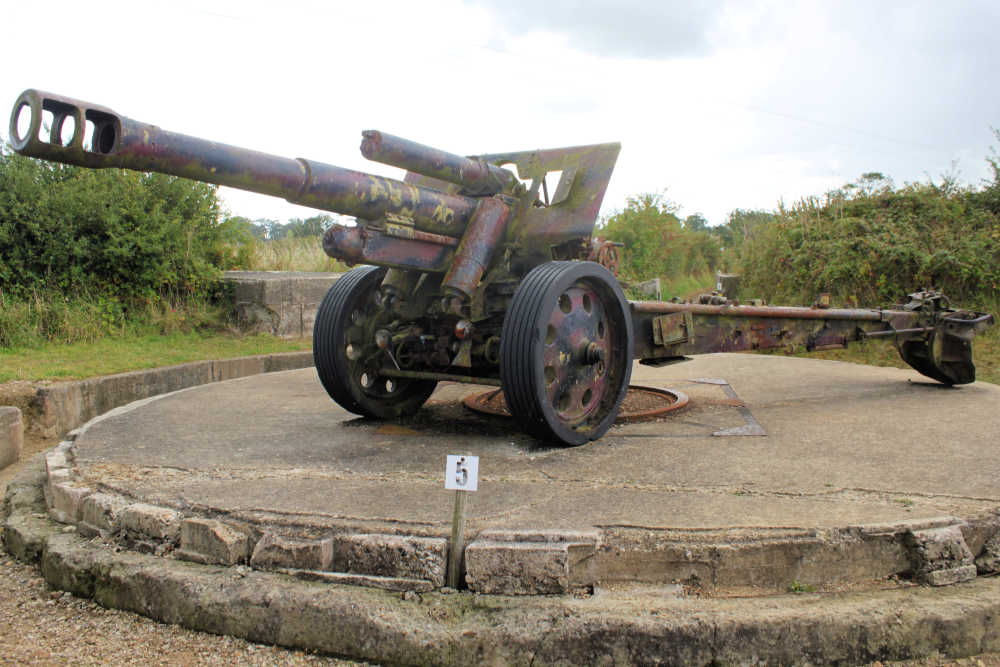
Photo by Steve Blackburn | CC BY 2.0
Maisy Battery was a group of three batteries, Les Perruques, La Martiniere and Foucher Farm much of which was lost to history after the war. The detective work of Gary Sterne led to the rediscovery of the site in 2004 and you can visit the Les Perruques part of the battery today. Why the battery was lost to history, whether the attack on Pointe du Hoc was “necessary” and why Colonel James Rudder “held” Pointe du Hoc despite his orders being to take Maisy are all interesting questions that make this a fascinating battery to visit.
The discovery of the batteries existence does explain why Utah Beach was still being shelled two days after D-Day, despite Pointe du Hoc and Longues-Sur-Mer being in Allied hands. How and why it was then lost to history is an intriguing mystery with lots of theories from different sources.
Reviews of Maisy Battery | 7 Les Perruques, 14450 Grandcamp-Maisy
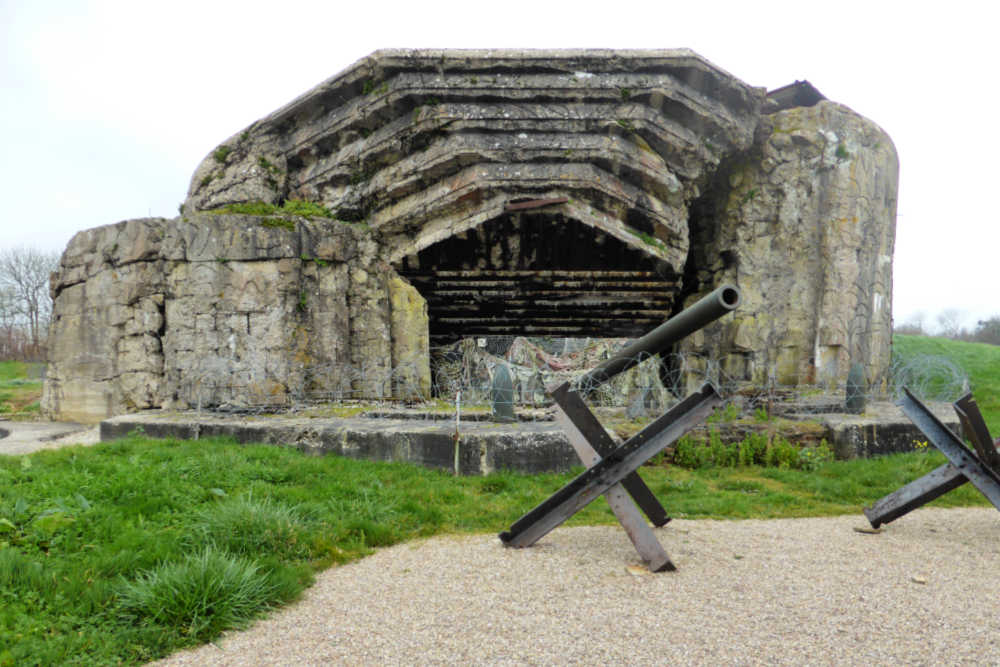
Crisbecq Battery which is also known as the Marcouf Battery was a WWII artillery battery that was made by the German Todt Organisation and formed part of the Atlantic Wall. The site was originally planned to be more armed than it was but due to supply problems, it only held three 210-mm navy guns (instead of a total of 11 guns). Two of these three guns were protected by large concrete casements as shown in the picture above. The site also had a command post, shelters for personnel (300 naval personnel to be precise) and ammo, and several defensive machine-gun placements. Except for the batteries at Cherbourg and Le Havre, this was the most powerful battery in the Bay of the Seine with a range of more than 30 km (19 miles).
Despite many bombings during the spring of 1944 and a large bombing the night before the D-Day landings, two of the guns remained operational and opened fire on Utah Beach on D-Day which aided in sinking the USS Corry. A few other battleships, including the USS Texas, fired against the battery and knocked out both guns. One of the guns was repaired and fired again on June 8th. The battery was taken the morning of June 12th, without a fight, by the 39th Regiment after the 9th US Infantry Division landed at Utah Beach.
Reviews of Crisbecq Battery | Route des Manoirs, 50310 Saint-Marcouf
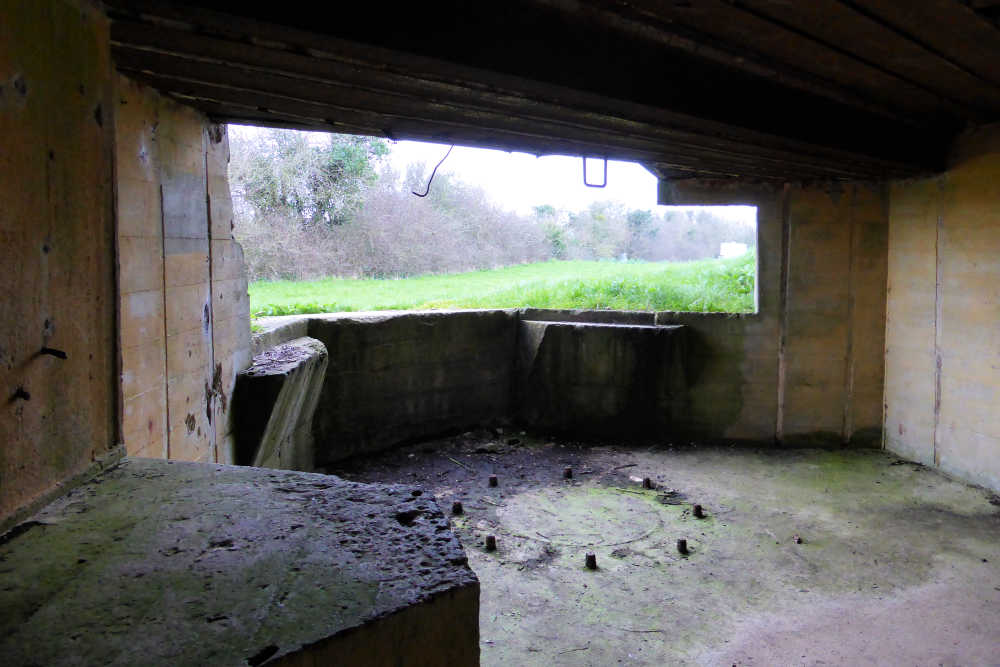
Also built by the Todt Organisation between 1941 and 1944, this battery was one of the first fortifications of the Atlantic Wall built on the French coast. It was built to protect the beaches along the Cotentin Peninsula and had an underground complex in addition to its defence system (4 x 105 mm guns). There were about 170 soldiers that manned this battery but because there weren’t any accommodations for them they were billeted in local houses. Azeville battery did not have its own fire control as it didn’t have line of sight of the landing beaches. Directions were sent to Azeville from the nearby Crisbecq battery through armoured communication wires.
This battery was one of the Allies’ prime objectives on June 6th, 1944 but despite an early attack it continued to fire upon Utah Beach for three days. At one point in these three days, it even fired upon its neighbouring Crisbecq Battery in order to clear the US troops that were on top of those bunkers! Finally, after fierce fighting on June 9th, it was silenced when it was captured by the 22nd Regimental Combat Team of the US 4th Infantry Division.
Reviews of Azeville Battery | Lieu-dit, La Rue, 50310 Azeville
Want to save this for later? Click the Pinterest button on the left for a pinnable image!
RESOURCES | PLAN YOUR TRIP TO NORMANDY
To book flights, rental cars, accommodations, and activities for your trip, please check out our recommended travel providers, favourite apps and websites.
- Rick Steves’ ‘Normandy TV show‘ episode
These are a few tours we would recommend for your trip to Normandy.
Some of the links in the post above are affiliate links. This means if you click on the link and purchase the item, we will receive an affiliate commission but this does not affect the price to you. Please read our full disclosure policy here.
